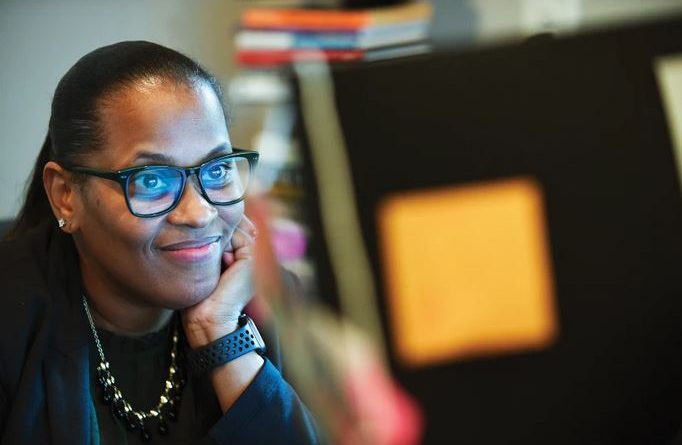Getting Face Time With Students May Be More Important Than You Think
During the pandemic, teachers have reported challenges in developing relationships with students and helping them engage, particularly in their remote and partially asynchronous classes.
One new study in the Journal of Neuroscience suggests why students’ brains really do warm up to new people faster in face-to-face encounters, and hints at ways teachers may be able to bolster familiarity in remote classrooms. It finds that the way people initially are exposed to a new person—through seeing their face in passing, via media, or interacting face-to-face—changes the way their brains become familiar with the person and develop a sense of their identity.
Researchers from the Friedrich Schiller University in Jena, Germany, and the University of York in England separated participants into three groups. One group sorted pictures of foreign celebrities into groups, considered “perceptual exposure.” The second group watched two weeks of a television series that featured specific actors. The third group simply chatted with research staff members in person over three days.
After being exposed to the new faces, the participants were connected to an electroencephalogram, or EEG, which measures electrical activity in the brain; typically, about 400 milliseconds after seeing a face, the EEG recorded a signal whose strength increased in proportion to how familiar the person was.
In-person talks sparked more brain activity
The researchers found that while over time participants in the perceptual group could more quickly identify and match the faces of the celebrities, they showed no activity in the parts of the brain associated with becoming familiar with them. Those who watched actors over two weeks showed some familiarity, but the strongest reactions came from participants who simply chatted briefly with staff face to face.
“With the two-week-long media training, participants every single day watched one of the episodes of these actors in either the American or the British series. And then in addition to that, we bombed them with information regarding the persons who are playing in these films,” said Gyula Kovács, co-author of the study and cognitive neuroscience professor at Friedrich Schiller University. “So they were motivated and, you know, it’s fun. … And despite this longer time period, the very short three days of personal interaction led to better results. That was surprising to me.”
“As soon as you get the interaction with a person, you immediately make judgments about the person’s trustworthiness, attractiveness—not only age, gender, and so on and so forth—the low level features—but deeper features. … and these all will add to your representation.”
Because the original study was conducted before the mass move to video classes under the pandemic, researchers are now working on a larger follow-up study to tease out differences in how familiarity develops in live, face-to-face interactions in person versus online.
Though the original experiments were conducted with college-age adults, Kovács said there are some takeaways for K-12 educators in how to build familiarity and connection with students in remote learning environments: namely, by providing synchronous and varied face-to-face interactions with students as often as possible.
“In Germany, teachers are not allowed to tell the students to switch on the camera, but … it’s really important that [teachers and students] have some kind of a face-to-face interaction and are not just talking to black boxes all the time,” Kovács said.
Moreover, when starting to develop familiarity, teachers may consider varying their position and background during online classes—which admittedly can be difficult when teaching to a desk-top camera—and encourage students to do so, too. “Always sitting at this same table, with a set background and stuff like that—that’s very unnatural,” Kovács said. “That’s not how we are in a real classroom, let alone having a normal conversation.”
Sourse: https://www.edweek.org/leadership/getting-face-time-with-students-may-be-more-important-than-you-think/2021/05




